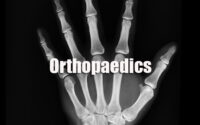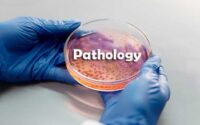Medical Oncology Questions and Answers
Medical Oncology Questions and Answers paper for the written examination is given below. Candidates who are looking for Medical Oncology exam Questions and Answers paper can find in this section. The applied candidates who are getting prepared for the Medical Oncology can view this page for the Medical Oncology Last Ten Years Questions and Answers Papers.

Download the Medical Oncology Questions and Answers & Solutions & make it as a reference for your exam preparation. Take advantage of these Medical Oncology Questions and Answers Papers in a proper manner to get qualifying Marks. Last 5 years Medical Oncology Questions and Answers Papers provided here. Candidates who are applied for the above exam can check and download the Medical Oncology Questions and Answers Papers from here.
Questions and Answers on Medical Oncology
1. A 52-year-old man presented with haemoptysis, weight loss, worsening breathlessness and retro-sternal chest pain. He was a lifelong heavy smoker. His ECOG Performance Status was ‘I’. His chest X-ray was abnormal. A CT scan of chest and abdomen demonstrated a large mass in the right lower lobe invading into the mediastinum and pericardium, extensive mediastinal lymphadenopathy, and bone metastasis (T4, N3, Mlb). Bronchoscopy and biopsy confirmed a squamous cell carcinoma. Mutation analysis revealed that EGFR and K-ras genes were both wild type. What is the most appropriate first-line therapy ”
(1) Docetaxel
(2) Gefitinib
(3) pemetrexed and cisplatin
(4) gemcitabine and cisplatin
2. A 28-year-old man presented with a painless swelling in the right testis and an ultrasound scan & FNAC confirmed the presence of a malignant mass. Following high right 3 orchidectomy, he was found to have a 40-mm seminomatous germ cell tumour without non seminomatous components. There was evidence of vascular invasion within the testis.
Investigations:
* serum lactate dehydrogenase (LDH) 1250 U/L (10-250)
* serum a-fetoprotein normal serum (β-human chorionic gonadotrophin (HCG) 700 U/L (<5)
* A CT scan of body showed retroperitoneal lymphadenopathy of up to 7 cm in size, a 3-cm mediastinal lymph node and over 30 pulmonary metastases. There were no signs of liver, brain or bone metastases.
What is the most appropriate International Germ Cell Cancer Collaborative Group classification?
(1) good prognosis because of the absence of liver, bone and brain metastases
(2) good prognosis because of the raised HCG and LDH
(3) intermediate prognosis because of the raised serum HCG and LDH
(4) poor prognosis because of the raised serum HCG and LDH
3. A 58-year-old, post-menopausal woman presented with back pain. She had no other symptoms. Fourteen years previously, she had undergone a mastectomy and axillary node clearance for a T2, NO, MO, grade 3, ER positive, HER2 negative breast cancer. This had been followed by six cycles of adjuvant cyclophosphamide, doxorubicin and 5-fluorouracil (CAF) chemotherapy and 5 years’ of tamoxifen. Her ECOG performance status was ‘I’. Physical examination was normal.
Investigations:
• full blood count normal
• serum alkaline phosphatase 325 U/L (45-105)
• all other liver, renal and bone biochemistry normal
• CT scan of chest and liver five lung metastases (largest 25 mm in diameter); solitary I-cm metastasis in left lobe of liver
• isotope bone scan multiple hot spots throughout dorsal and lumbar spine
In addition to a bisphosphonate, what is the most appropriate systemic therapy?
(1) anthracycline-based chemotherapy
(2) taxane-based chemotherapy
(3) aromatase inhibitor
(4) CDK 4/6 Inhibitor plus aromatase inhibitor
4. A 68-year-old woman was being given cetuximab as part of treatment for advanced colon cancer. She developed a maculopapular acneiform rash with inflammation and pustules. This involved her face, shoulders, upper limbs, chest and back. She had difficulty dressing as a result, but there was no pruritus and it was not tender to touch. What is the most appropriate management?
(1) continue cetuximab and treat with topical antibiotics
(2) interrupt cetuximab and treat with emollient
(3) interrupt cetuximab and treat with systemic antibiotics
(4) interrupt cetuximab and treat with topical antibiotics
5. A 1-year-old boy developed bilateral retinoblastomas. Following surgical treatment he was referred to the hospital cancer genetics unit. His parents were very concerned that his 4-year-old sister would also develop this condition. What is the mode of inheritance of mutations of the Rb gene?
(1) autosomal dominant
(2) autosomal recessive
(3) mitochondrial
(4) X-linked recessive
6. A 64-year-old man presented with sever haematemesis and melaena requiring emergency blood transfusion. Investigations showed a c-kit positive gastrointestinal stromal tumour arising from the fundus of the stomach. A CT scan showed a 6-cm tumour, but no metastases. What is the most appropriate management?
(1) downstaging with Imatinib followed by appropriate surgery
(2) downstaging with imatinib followed by appropriate surgery, and a further 2 years of imatinib
(3) gastrectomy
(4) imatinib monotherapy
7. A 67-year-old man presented with dysphagia and weight loss. Endoscopy and biopsy showed a grade 3 adenocarcinoma beginning at 30 cm from the incisors, extending for 2 cm with the oesophagogastric junction at 40 cm. An endoscopic ultrasound scan suggested invasion into, but not through, the lamina propria and no involved lymph nodes. A CT scan of chest and abdomen and FDG-PET-CT scan showed no other sites of disease. What is the best estimate of the stage of disease?
(1) Ia
(2) Ib
(3) Ic
(4) Ha
8. A 52-year-old woman presented with increased abdominal distension and constipation. She had been treated 18 months previously with a total abdominal hysterectomy and bilateral salpingo-oophorectomy followed by carboplatin and paclitaxel for a stage IIIc serous ovarian adenocarcinoma. She had shown a complete radiological and biochemical response.
Investigations:
• serum carcinoembryonic antigen: 18 ug/L (<10)
• serum CA 125: 2130 U/mL (<35)
• CT scan of chest, abdomen and pelvis:
• splenic metastases; omental caking; ascites
What is the most appropriate second line chemotherapy regimen?
(1) carboplatin and liposomal doxorubicin
(2) carboplatin and paclitaxel
(3) liposomal doxorubicin
(4) paclitaxel
9. A 79-year-old man presented to his general practitioner with lower urinary tract symptoms. Over the past 2 years he had noticed worsening urinary frequency and nocturia of up to six times per night. On digital rectal examination, he had a very large, benign-feeling prostate. His serum prostate-specific antigen was 9.81 ug/L (<4). He proceeded to a transurethral resection of the prostate (TURP) and 62 g of tissue was resected. The pathologist detected a Gleason score 6 (3+3) prostatic adenocarcinoma in <5% of the prostatic chippings. Consequently, he underwent a postoperative MR scan of pelvis, which showed a prostate volume of 92 ml, a large resection cavity, no obvious residual cancer and no pelvic lymphadenopathy. What is the most appropriate management strategy?
(1) active surveillance
(2) brachytherapy
(3) radical prostatectomy
(4) external beam radiotherapy
10. A 65-year-old woman had undergone surgery for a grade 2, T2, NI, ER positive, HER2 negative carcinoma of the breast. After six cycles of adjuvant fluorouracil, epirubicin, cyclophosphamide (FEC) chemotherapy she started taking anastrozole. A baseline bone mineral density test showed mild osteopenia (T score = -1.2). She had no other major risk factors for osteoporotic fracture. In addition to lifestyle advice, what is the most appropriate management?
(1) add a calcium and vitamin D supplement
(2) add an oral bisphosphonate
(3) add tamoxifen to anastrozole
(4) switch anastrozole to tamoxifen
11. The cyclin responsible for facilitating the progress of the cell into and through mitosis is:
(1) Cyclin A
(2) Cyclin B
(3) Cyclin D
(4) Cyclin E
12. Select the FALSE statement regarding microRNAs?
(1) microRNAs encode protein kinases that regulate cell cycle.
(2) They regulate mRNA expression.
(3) There is at least five clusters of microRNAs targeting mRNA that encodes’ cell-cycle regulatory proteins.
(4) miR-15a/16 cluster targets cyclin El and cyclin D1.
13. RAF is inhibited by which of these therapeutic agents that induce apoptosis?
(1) Sorafenib
(2) Imatinib mesylate
(3) Bortezomib
(4) Taxanes
14. The Warburg effect describes:
(1) Exponential cell growth in response to an exogenous stimulant.
(2) Inefficient energy production by most cancer cells, resulting in rapid adenosine triphosphate (ATP) depletion and necrotic cell death.
(3) Initiation of neoplasia requires two somatic mutations for initiation of sporadic neoplasms and hereditary neoplasms require a genetic plus a somatic mutation.
(4) Sculpting of normal human tissues as a result of cell death.
15. The stochastic model of tumor heterogeneity is best described as:
(1) Every cell has equal potential to initiate and sustain tumor growth, but most cells do not proliferate extensively because of the low cumulative probability of permissive events.
(2) Cancer stem cells (CSCs) are biologically distinct from the bulk cell population, which does not possess tumor-initiating activity.
(3) Tumors are heterogeneous secondary to random, acquired mutations.
(4) Tumors are pressured into heterogeneity by variable pressures applied to the tumor.
16. Which of the following is TRUE with regard to genetic mutations in cancer?
(1) Gain-of-function mutations (oncogenes) are generally dominant at the cellular level.
(2) Loss-of-functions mutations (tumor suppressor genes) are generally recessive at the cellular level.
(3) Ninety percent of germ line mutations in familial cancer syndromes are in tumor suppressor genes.
(4) All of the above.
17. Which of the following best describes the term “proto-oncogene”?
(1) A normal cellular gene that has been transduced by a retrovirus that is then mutated following viral replication.
(2) A homologue of a known oncogenic element identified in prehistoric specimens.
(3) A transforming viral gene that can cause malignant transformation in fibroblasts in vitro.
(4) A viral oncogene that, following infection, is the direct causative agent of human cancer.
18. Which one of the following statement is CORRECT with regard to molecular profiling using gene arrays and proteomics?
(1) Gene arrays can predict protein-protein interactions.
(2) Protein levels and protein function do not correspond directly with gene transcript levels.
(3) Polymerase chain reaction can be used to amplify biopsy material for use in gene arrays, whereas no signal amplification technology is standard in protein arrays.
(4) All of the above
19. The presence of mutations in p53 has been associated with which of the following properties on cells:
(1) Loss of the G2 checkpoint following treatment with DNA-damaging agents
(2) Enhanced capacity to undergo apoptosis following exposure to radiation
(3) Increased capacity for DNA amplification
(4) 1 and 3.
20. Which of the following syndromes are associated with abnormalities in the double-strand repair?
(1) Xeroderma pigmentosum
(2) Fanconi anemia
(3) Lynch syndrome
(4) Bloom syndrome
| Practice Set | MCQs |
| Quiz | Questions and Answers |
21. Which of the following is CORRECT about cohort studies?
(1) Cohort studies only follow subjects prospectively
(2) Subjects are free of disease at the time of study entry
(3) The incidence of the disease in the exposed group is compared to members of the
(4) general population who have been matched for selected characteristic
22. Confounding factors and interaction (also known as effect modification) are common in epidemiologic — studies. Which of the following statements is TRUE in regards to confounding and Interaction?
(1) Confounder is not associated with exposure .
(2) Confounder is associated with the disease and dependent on the exposure
(3) Confounder may be an intermediate step between exposure and disease
(4) Confounder is not a true relationship and interaction is true relationship between an exposure and disease
23. Potential weaknesses in case-control studies include:
(1) Selection biases related to choosing and enrolling subjects
(2) Recall biases related to previous exposures
(3) Cases may not be representative of disease
(4) All of the above
24. Dr. Mathur wishes to study the relationship between diet tobacco consumption and the development of gastric cancer. He selects the cases of gastric cancer detected over the last 15 years, and then to obtain his controls he selects for patients who referred to the gastroenterology clinic. This is as an example of:
(1) Information bias
(2) Selection bias
(3) Misclassification bias
(4) All of the above
25. Which of the following cancer is decreasing in incidence in India?
(1) Cervical cancer
(2) Prostate cancer
(3) Breast cancer
(4) Lung cancer
26. Which of the following is TRUE regarding cigarette smoking causing cancer?
(1) DNA adducts caused by carcinogens in cigarette smoke are responsible for mutations that can eventually cause cancer.
(2) Nicotine can reduce apoptosis and promote angiogenesis.
(3) Compounds that promote inflammation may play a role in cancer development
(4) All of the above
27. The HPV vaccine Gardasil
(1) Is a quadrivalent — vaccine containing virus-like particles (VLPs) from four different types of HPV.
(2) Protects from all HPV-causing cervical cancer.
(3) Is recommended only for sexually active women.
(4) Is recommended for treating cervical cancer.
28. The role of EBV in cancer is characterized by the following:
(1) EBV DNA is present in the tumor of all Burkitt lymphoma patients.
(2) EBV is universally present in all CNS lymphomas’ in AIDS patients.
(3) Nasopharyngeal carcinoma is the only nonlymphoid malignancy associated with EBV.
(4) Involvement in all Hodgkin lymphoma
29. Examples of chemical carcinogens include
(1) Benzene has been linked to myelodysplastic syndrome and acute myeloid leukemia.
(2) Heterocyclic amines are associated with breast and colon cancer.
(3) Aryl aromatic amines found in tobacco smoke and in dyes have been associated with bladder cancer.
(4) All of the above.
30. Obesity and physical activity are associated with following cancers:
(1) Obesity but not low physical activity is associated with risk of colon cancer.
(2) Obesity is not a risk factor for endometrial cancer.
(3) Higher lifetime physical activity is associated with lower risk for pancreatic cancer.
(4) Obesity lowers the risk of gallbladder cancer.
31. In analyzing a randomized controlled trial of a screening test which is the best indicator of effectiveness?
(1) Absolute reduction in mortality
(2) Evidence of stage shift
(3) Increased 5-year survival
(4) Relative reduction in mortality
32. Which statement regarding screening 3 for breast cancer is TRUE?
(1) The monthly — breast self- examination (BSE) is a crucial component of breast cancer screening programs.
(2) The BSE has been shown to be 3 ineffective for breast cancer screening.
(3) Increasing the interval of mammographic screening from year to 2 years results in a halving of the mortality benefit.
(4) Mammography has a higher positive predictive value (PPV) for women aged 40 to 49 as compared with women aged 50 to 59.
33. A 19-year-old woman presents for a health maintenance visit. She has been sexually active for 4 years and has had one episode of chlamydia. What is the recommended approach to cervical cancer screening for her?
(1) Begin annual screening with cervical cytology (Pap smear) plus HPV cotesting.
(2) Begin annual screening with cervical cytology alone.
(3) No cervical cancer screening at this time; start screening at age 21 with cervical cytology alone.
(4) No cervical cancer screening at this time; start screening at age 21 with cervical cytology and HPV cotesting every 3 years.
34. Which of the following CRC screening tests can directly prevent colorectal cancer?
(1) CT — colonography = (“virtual colonoscopy”)
(2) Fecal immunochemical testing (FIT)
(3) High-sensitivity fecal occult blood testing (FOBT)
(4) Optical colonoscopy (endoscopy)
35. Which of the following screening tests for Lung Cancer has been proven to be successful and is being used routinely in some countries?
(1) Chest X-rays of all subjects above age 50
(2) HRCT Chest scans of all smokers (>30 pack/yrs)
(3) Low-dose Chest CT scans of high risk subjects
(4) Chest X-ray & CT Scan of all smokers (>30 pack/yrs)
36. Which of the following statement is TRUE?
(1) Continued smoking after the diagnosis of localized prostate cancer does not increase the risk of recurrence.
(2) The adverse effect of smoking is 3 not acutely reversible. Therefore smoking cessation is not : recommended before surgical resection for esophageal cancer.
(3) Current smoking does not increase the risk of postoperative death in lung cancer patients undergoing surgery.
(4) Current smoking increases the toxicities associated with radiotherapy in patients with head and neck cancer.
37. In clinical trials, systemic retinoids and beta carotene were shown to reduce cancer incidence in this group of high-risk individuals
(1) Skin cancer in patients with xeroderma pigmentosum
(2) Lung cancer in heavy smokers
(3) Cervical cancer in patients with cervical dysplasia
(4) Colorectal cancer in patients with adenoma
38. Which of the statements is TRUE regarding nonsteroidal anti-inflammatory drugs (NSAIDs) in the prevention of colorectal cancer?
(1) Chemopreventive effects of low dose aspirin on colorectal cancer development were demonstrated in clinical trials, and its overall benefits outweigh the risks in adults at average risks’ of developing colorectal cancer.
(2) High-dose sulindac prevents the development of new polyps, although it does not cause the regression of established polyps.
(3) In randomized trials, both rofecoxib and celecoxib were shown to reduce the risk of metachronous colorectal adenomas and colorectal cancer.
(4) Considering the risks associated with these agents, screening strategy alone is recommended in average-risk adults
39. Helicobacter pylori infection Is associated with increased risk of which of the following? .
(1) Esophageal adenocarcinoma
(2) Gastric cardia carcinoma
(3) Esophageal squamous cell carcinoma
(4) Intestinal-type gastric adenocarcinoma
40. What is TRUE regarding the risk of endometrial cancer for patients with Lynch syndrome?
(1) The risk for women with Lynch syndrome varies from 20% to 60% and is higher than development of ovarian cancer.
(2) Clinically, these cancers are frequently poorly differentiated, present at an advanced stage, and associated with poor prognosis.
(3) Risk reducing hysterectomy should be performed shortly after menarche.
(4) Estrogen replacement is contraindicated in women with Lynch syndrome undergoing bilateral salpingo-oophorectomy
41. Which of the following statements regarding prophylactic oophorectomy is TRUE?
(1) Prophylactic bilateral salpingo-oophorectomy (BSQ) is the most effective therapy to reduce the risk of ovarian cancer in women with BRCAI or BRCA2 gene mutation.
(2) BSO in BRCAI or BRCA2 gene mutation carriers is indicated at age 30.
(3) BSO in BRCAI or BRCA2 gene mutation carriers has no effect on the risk of developing breast cancer.
(4) All the above
42. Which of the following malignancies does NOT have a significant increase In incidence among people with Lynch syndrome?
(1) Colon cancer
(2) Cervical cancer
(3) Ovarian cancer
(4) Endometrial cancer
43. A 28-year-old woman with bilateral ductal cancer presents to the medical oncologist for assessment and treatment. Her medical history is notable for intussusception at 6 years of age. On her physical examination, the medicine resident notices small blue/black hyperpigmented macules on her lips, buccal mucosa, and fingertips. What is her diagnosis?
(1) Hereditary BRCAI syndrome
(2) Li-Fraument syndrome
(3) Peutz-Jeghers syndrome
(4) Cowden syndrome
44. Which of the following statements regarding people with a BRCA1 or BRCA2 gene mutation are TRUE?
(1) The majority of BRCA1 gene mutation carriers who develop breast cancer develop estrogen receptor-positive breast tumors, and BRCA2 gene mutation calriers most often develop estrogen receptor-negative breast tumors.
(2) BRCA1 and BRCA2 gene mutation carriers have an increased risk to develop pancreatic cancer.
(3) BRCA2 gene mutations are associated with an increased risk for follicular thyroid cancer
(4) Prophylactic bilateral mastectomy decreases the risk of breast cancer by about 50% among women with a BRCA1 or BRCA2 gene mutation.
45. Which of the following scenarios best identifies a prognostic marker?
(1) KRAS mutation testing in setting of colon cancer
(2) Dihydropyrimidine dehydrogenase (DPD) deficiency in the setting of 5-FU therapy
(3) MMR protein expression deficiency in setting of colon cancer
(4) UGTIAI*28 polymorphism in setting of irinotecan therapy



